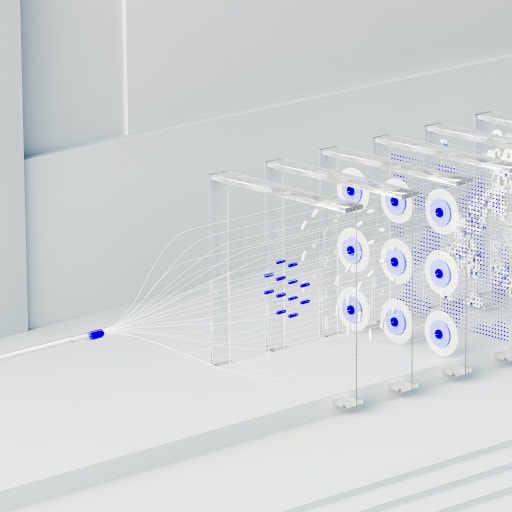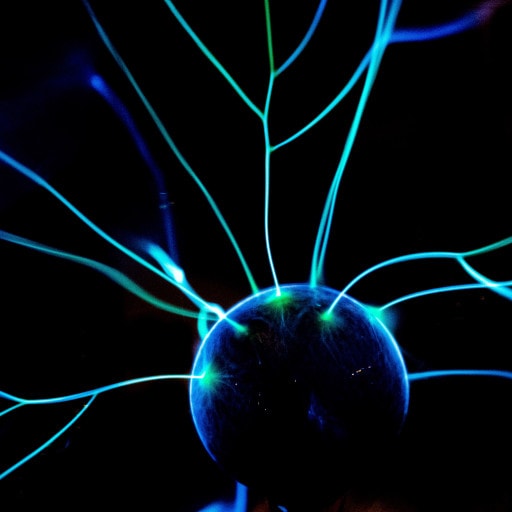Machine learning is a rapidly growing and transformative technology that has revolutionized numerous industries, and neural networks are playing a crucial role in this development. A neural network is essentially an artificial, deep-learning technology that models the behavior of real neurons, providing a way to optimize and create better solutions for computer vision, natural language processing, and various other tasks in machine learning. In this article, we’ll look at what a neural network is, how it works, and the importance of neural networks in machine learning.
What Is a Neural Network?
A neural network is essentially a set of layers consisting of neurons that are connected together to form a sophisticated algorithm. These neurons can be arranged in multiple ways, and depending on their arrangement, they can be used to learn complex patterns from non-linear raw data. Because of the nature of these algorithms, neural networks can be used to process both linear and non-linear problems more quickly than traditional algorithms. The structure of a neural network is such that it can be adapted to almost any task, from classifying images to solving complex equations.
How Does a Neural Network Work?
At the core of how a neural network functions are the layers, which are mathematical models that represent the input, output, and hidden layers. The input layer receives data, which can be anything from images and words to numbers. The output layer provides the output of the network and the hidden layers are those in between, which allow the network to learn and recognize patterns.
In order to determine the output of the network, weights and biases are assigned to each neuron. These are used to determine how much value the neuron should have when calculating an output for the given input. By adjusting these weights and biases, the network can learn to recognize patterns in the input data and become more accurate.
The Role of Neural Networks in Machine Learning
Neural networks are a powerful tool for machine learning because they allow for the processing of huge amounts of data quickly and accurately. This is due to the ability of neural networks to recognize patterns in the data more quickly and effectively than traditional algorithms, which enables them to generate better models for machine learning tasks.
Neural networks have been used in a variety of applications, such as machine translation, computer vision, natural language processing, and medical diagnosis. These neural networks use deep learning to generate better models, which are then used to generate more accurate results.
Additionally, neural networks are useful in optimizing the machine learning models, as they can adjust the weights and biases to generate better models. This overall process allows for more efficient machine learning models that can recognize patterns and make better predictions quickly.
What are neural networks used for?
Neural networks are used for a wide range of tasks and applications in various fields. Some common uses of neural networks include:
- Pattern Recognition: Neural networks excel at recognizing patterns in data. They are widely used in image and speech recognition systems, natural language processing, and computer vision applications.
- Classification and Prediction: Neural networks can classify data into different categories or predict outcomes based on input. They are used in applications such as sentiment analysis, spam detection, fraud detection, and recommendation systems.
- Control Systems: Neural networks are used in control systems to make decisions and adjust parameters based on feedback. They find applications in robotics, autonomous vehicles, and process control.
- Time-Series Analysis: Neural networks can analyze time-dependent data and make predictions or detect patterns in sequences. They are used in financial forecasting, stock market analysis, weather prediction, and other time-series prediction tasks.
- Optimization: Neural networks can be used to optimize complex systems by finding the best set of parameters or configurations. They are applied in areas such as resource allocation, scheduling, and logistics.
- Generative Models: Neural networks can generate new data that resembles the training data. They are used in tasks such as image synthesis, text generation, and music composition.
These are just a few examples, and neural networks have a wide range of applications in many other fields, including healthcare, finance, gaming, and scientific research.
Video recommendations for neural network in machine learning
We recommend you these two videos to know more about neural networks in machine learning.
Conclusion
Neural networks are an invaluable tool for machine learning and can be applied to a range of tasks. By allowing for the faster processing of data and the ability to recognize patterns, neural networks can generate better models for machine learning tasks and optimize existing models. Moreover, neural networks can be used to provide insights into complex patterns in data that may have been difficult to recognize using traditional algorithms.
FAQ
What is a neural network?
A neural network is an artificial, deep-learning technology that models the behavior of real neurons, providing a way to optimize and create better solutions for computer vision, natural language processing, and various other tasks in machine learning.
How does a neural network work?
A neural network consists of input, output, and hidden layers made up of neurons that are connected together. Weights and biases are assigned to each neuron to determine how much value should be used in calculating an output. By adjusting these weights and biases, the network can learn to recognize patterns in the input data and become more accurate.
What are 3 examples of neural network?
- Multilayer Perceptron (MLP): A feedforward neural network with multiple layers of interconnected nodes (neurons). It is a basic and widely used architecture for various tasks, including classification and regression.
- Convolutional Neural Network (CNN): Specialized for computer vision tasks, CNNs are designed to process grid-like data, such as images. They utilize convolutional and pooling layers to extract spatial features and achieve high accuracy in tasks like image classification and object detection.
- Recurrent Neural Network (RNN): Designed for sequence data, RNNs have connections between nodes that form directed cycles, allowing information to persist over time. They excel in tasks such as natural language processing and speech recognition, where sequential dependencies are important.
What are the 3 types of learning in neural network?
- Supervised Learning: In supervised learning, the neural network is trained using labeled input-output pairs. It learns to map inputs to corresponding outputs by minimizing the error between its predicted outputs and the true outputs provided in the training data.
- Unsupervised Learning: Unsupervised learning involves training the neural network on unlabeled data. The network learns to discover patterns, structures, or representations in the data without any explicit guidance. Clustering and dimensionality reduction are common tasks in unsupervised learning.
- Reinforcement Learning: Reinforcement learning is a learning paradigm where the neural network, called an agent, interacts with an environment. The agent receives feedback in the form of rewards or penalties based on its actions. It learns to take actions that maximize cumulative rewards over time by exploring and exploiting different strategies.
What is the difference between AI and neural network?
AI (Artificial Intelligence) is a broad field that encompasses various techniques and methods aimed at creating machines that can perform tasks that typically require human intelligence. It involves the development of algorithms and models that enable machines to perceive, reason, learn, and make decisions.
A neural network, on the other hand, is a specific type of model or algorithm used in AI. It is inspired by the structure and functioning of the human brain and consists of interconnected nodes (neurons) organized into layers. Neural networks are designed to learn and recognize patterns from data by adjusting the strengths of connections between neurons through a process called training.
In summary, AI is the broader concept that encompasses various approaches and technologies to create intelligent machines, while neural networks are a specific type of model used within the field of AI for tasks such as pattern recognition, prediction, and decision-making.
What is the role of neural networks in machine learning?
Neural networks are useful in machine learning because they can process large amounts of data quickly and accurately. They can also be used to generate better models for machine learning tasks and optimize existing models.






